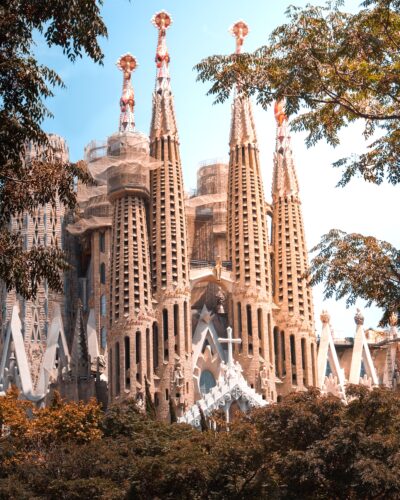
It was a strange choice for sightseeing, but here I was, at the entrance gate of Sachsenhausen concentration camp, just outside of Berlin, Germany.
I’d always had a fascination with the history of World War II (while my friends were reading Sweet Valley High I was devouring the true-life memoirs of Holocaust survivors,) so when I booked a weekend trip to Berlin, then discovered Sachsenhausen was just a 45-minute train ride away, I knew I had to visit.
This work camp was built in the suburb of Oranienburg in 1936, just after Heinrich Himmler became chief of the police. It was heralded as revolutionary, a chilling example of German efficiency and superiority on which all other SS death camps would later be modelled.
When I arrived the weather was cold and wet, fitting for the sombre day ahead. ‘Arbeit Macht Frei’ the entrance sign read: ‘It means ‘work will set you free’,’ our tour guide told us.
It’s an innocent sounding platitude, until you discover that these forced labour camps were designed to literally work its inhabitants to death as part of Hitler’s ‘Final Solution to the Jewish Question’ – his genocidal plan to systematically wipe the entire Jewish population from the planet.
We made our way around the now-bare barracks that once housed 200,000 prisoners, then on to to the cells where Germans who were brave enough to stand up to the Nazis – including academics and clergy men – were locked away for speaking out. One prisoner, German Lutheran pastor, Martin Niemöller, was credited with this speech you might recognise (the exact wording has been debated, but the premise remains the same):
‘First they came for the Communists and I did not speak out, because I was not a Communist. Then they came for the Socialists and I did not speak out, because I was not a Socialist. Then they came for the trade unionists and I did not speak out, because I was not a trade unionist. Then they came for the Jews and I did not speak out, because I was not a Jew. Then they came for me… and there was no one left to speak out for me.’
We stood in sombre silence at the red-brick remains of the crematory ovens, barely able to contemplate the atrocities carried out there.
I asked the tour guide what modern Germans thought about the Holocaust and she looked genuinely upset. It was an unbelievably dark period of their history, she told me, and the younger generations struggled to understand how it had even happened.
But they didn’t want to brush over the atrocities or play down their role, she continued. Instead, they felt an obligation to remind the world about the part Germans played in history’s worst genocide. They wanted to people to see the old work camps and to understand the horrors that played out there. We remind ourselves of the terrible sins of the past so that we don’t repeat them.
The weather matched our moods as we left the Sachsenhausen concentration camp – dark, and heavy.
Then, just as we were lining up to get back on the coach, the black clouds thinned and a patch of sunshine broke through, and this gorgeous rainbow appeared.
It was surreal – like something was trying to reassure us that, despite the darkness that had overwhelmed that site in the past, light and hope would always win. Or, maybe it was just a random rainbow.
Either way, it was the perfect, humbling farewell to our tour.
Thinking of booking a trip to Berlin or visiting the Sachsenhausen concentration camp? Check out the Visit Berlin website for inspiration on where to go and what to do in the German capital.



















